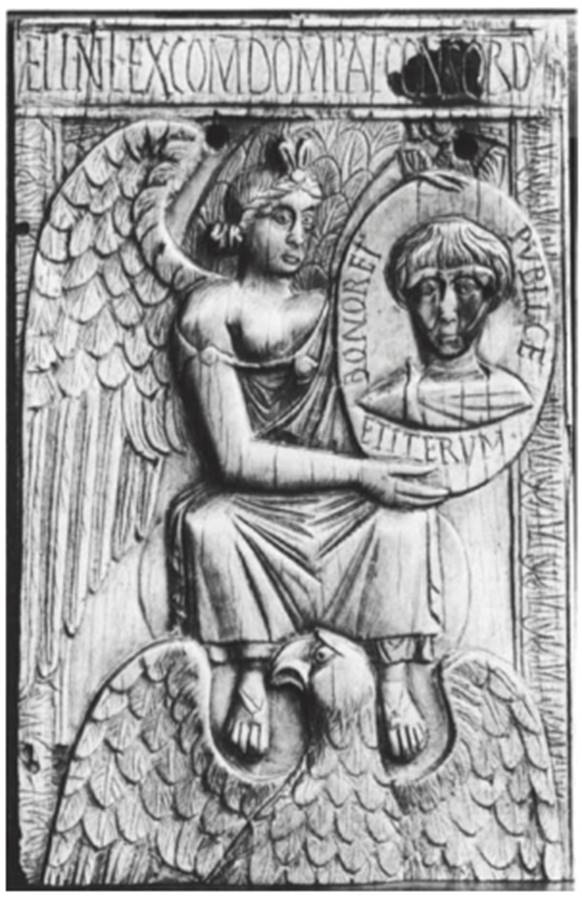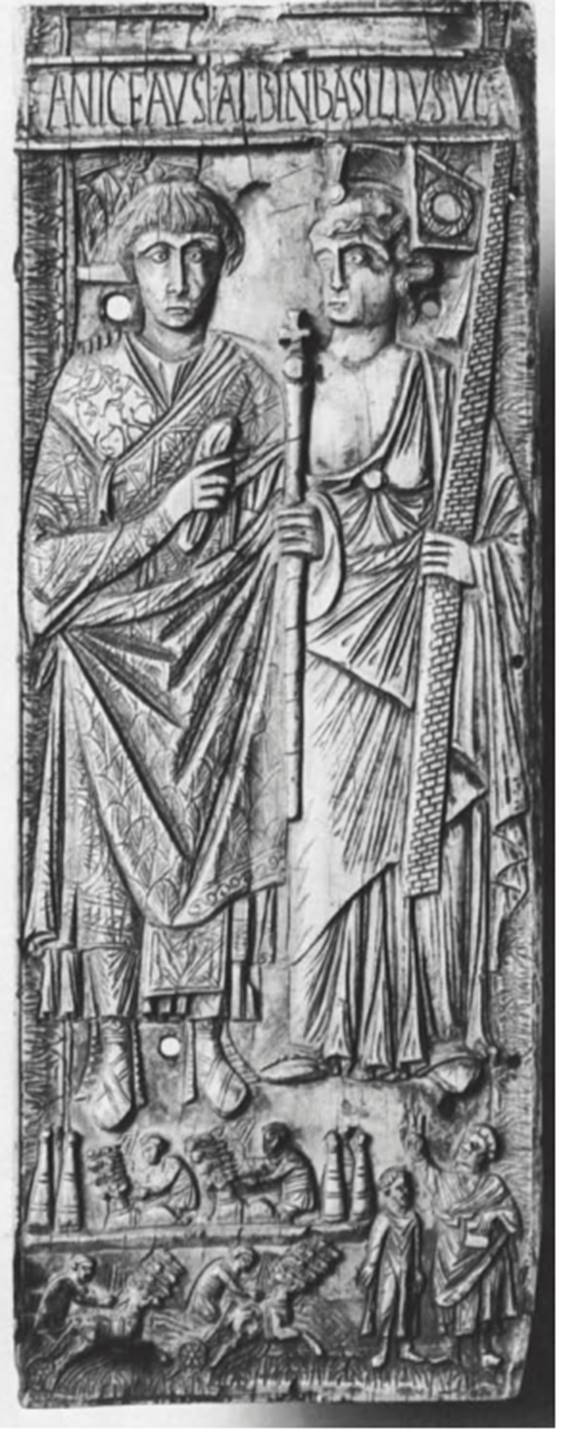Diptych of the consul Basilius. Italy, 480. Ivory
The diptych celebrates the consulship of Basilius in 480. Except for later dowel holes and some losses around the face of the personification of Rome, the rear leaf is well preserved. The front has been trimmed, only slightly at the top, but over one-third of its original length is missing from the bottom.
Depicted on the rear leaf is the standing consul dressed in a toga contabulata, holding a cross- surmounted scepter in his left hand and the mappa to his chest with the right. Standing next to the consul, with her arm around his shoulder, is a helmeted personification of Rome holding in her left hand the consular fasces. Although no groundline is indicated, the figures seem to be located in a shallow space before the columns of the circus tribunal. The architrave over the columns has been worked like an inscription tablet and bears the consul's name and rank: ANic(ius) favst(us) albin(us) basilivs v(ir) c(larissimus). Below the rather stern image of Rome embracing the consul is a scene of the circus race held on the day Basilius took office. At the right of this lower zone is an as yet unsatisfactorily explained pair of figures: a mature man in a senatorial toga gestures upwards toward the consul; standing idly next to the togatus is a youth, generally said to be a slave.


The now fragmentary front side of the diptych carried a different composition. Remaining is an eagle, supporting a Victory seated on a globe. The Victory holds an inscribed (bono rei pvblice et itervm) portrait shield bearing Basilius' image in relief. Above this are visible the columns and tablet with the consul's titles: et iNL(ustris) ex coM(ite) DOM(esticorum) PAT(ricius) cons(uI) ord- (inarius). Like the columns on the rear leaf, these do not appear to be extended downward.
As on the rear leaf, the consul Basilius is a tall, thin man with a long face. His hair is coarse and of medium length, combed forward from the crown of his head and cut in low bangs. On both leaves he appears to have a short, stubbly beard. His gazing eyes are strongly engraved into the low relief surface. In many passages of the relief this linear detailing degenerates into repetitive decoration, as for example on the personification's chiton, with its triangular facets marked by teardrop-shaped incisions.
The leaves have been separated since at least the eighteenth century, possibly earlier. Both leaves attested in Florence in 1716: front in the Riccardi collection, rear in the collection of a Canonicus Apollonio Bastelli; in beginning of the nineteenth century, front in the Bossi collection, given in 1864 to the Pinacoteca di Brera, Milan; rear given by Bastelli to the Uffizi Gallery, Florence.
Bibliography: Delbrueck, 1929, no. 6; Volbach, 1976, no. 5; Bovini and Ottolenghi, 1956, nos. 29, 30 (same in both editions).
Date added: 2025-07-10; views: 153;
